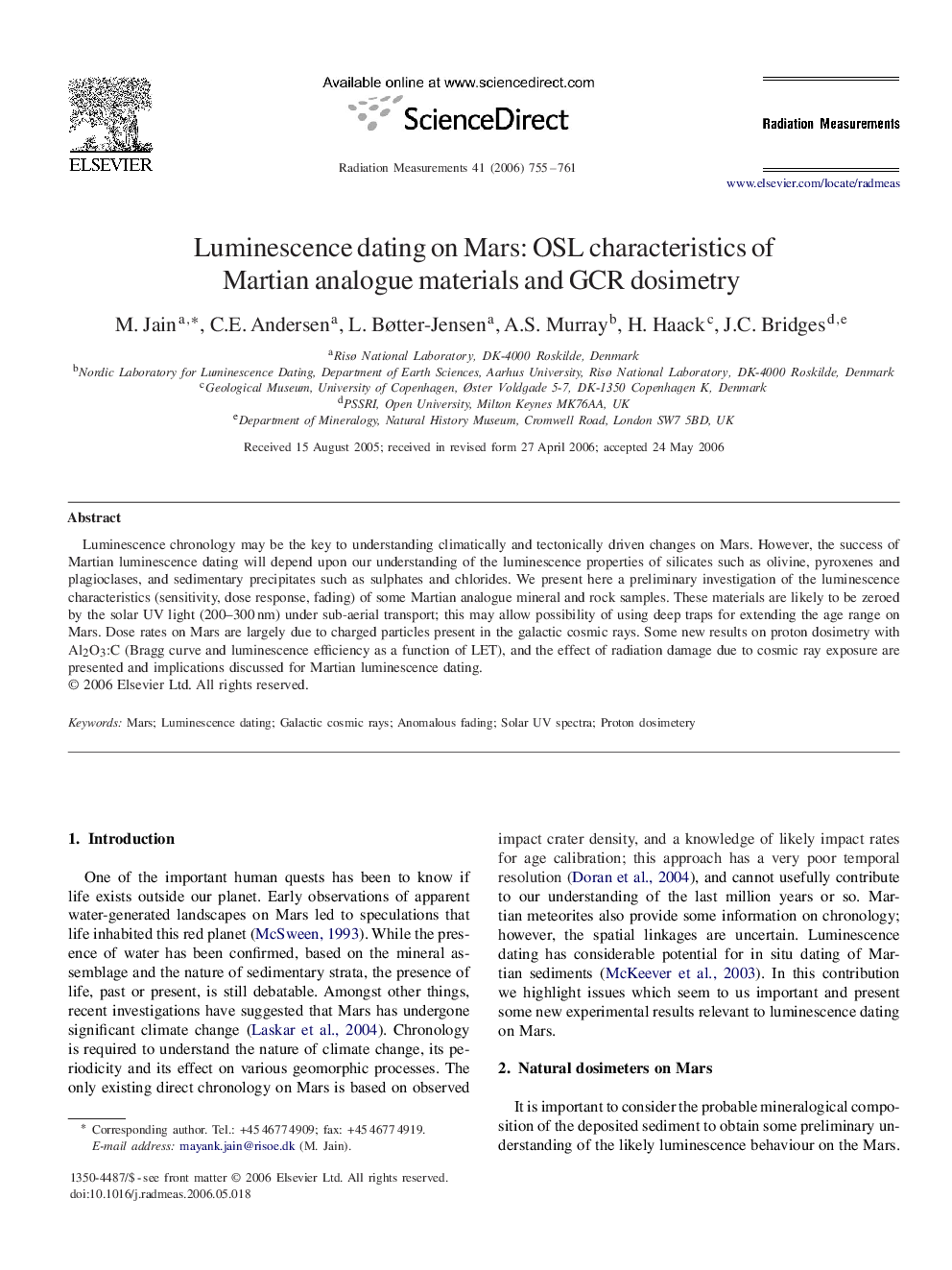| Article ID | Journal | Published Year | Pages | File Type |
|---|---|---|---|---|
| 1881336 | Radiation Measurements | 2006 | 7 Pages |
Luminescence chronology may be the key to understanding climatically and tectonically driven changes on Mars. However, the success of Martian luminescence dating will depend upon our understanding of the luminescence properties of silicates such as olivine, pyroxenes and plagioclases, and sedimentary precipitates such as sulphates and chlorides. We present here a preliminary investigation of the luminescence characteristics (sensitivity, dose response, fading) of some Martian analogue mineral and rock samples. These materials are likely to be zeroed by the solar UV light (200–300 nm) under sub-aerial transport; this may allow possibility of using deep traps for extending the age range on Mars. Dose rates on Mars are largely due to charged particles present in the galactic cosmic rays. Some new results on proton dosimetry with Al2O3:CAl2O3:C (Bragg curve and luminescence efficiency as a function of LET), and the effect of radiation damage due to cosmic ray exposure are presented and implications discussed for Martian luminescence dating.
